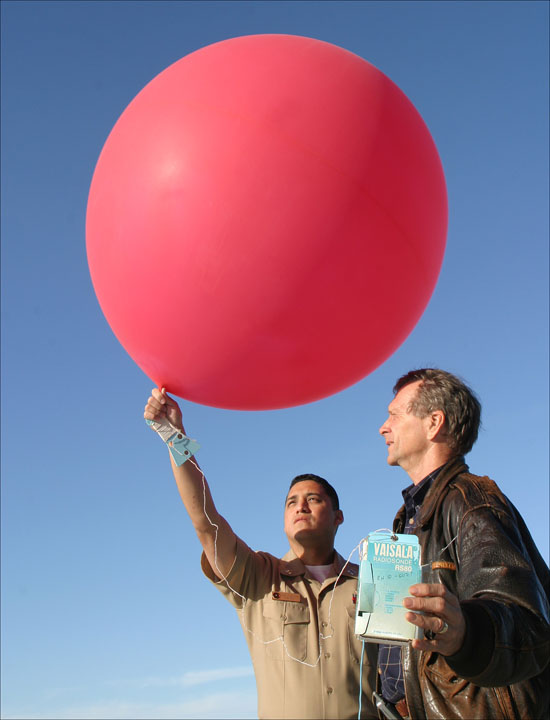Labs and Research - Meteorology
Laboratories
As described below, the department is served by three major laboratory facilities: An interactive computer lab, a synoptic meteorology lab, and a meteorological measurements lab.
The Interactive Digital Environmental Analysis (IDEA) Laboratory, which is shared with Oceanography, provides real-time acquisition and analysis of conventional and remotely-sensed data in support of the synoptic and physical meteorology and oceanography programs. The laboratory consists of 22 image analysis and graphics workstations. The laboratory accesses real-time GOES, NOAA, Navy (FNMOC), and DMSP data for use in instruction and research.
The department has developed a modern Synoptic Analysis and Forecasting Laboratory which receives environmental products and observations for instruction on the preparation of real-time weather analyses and forecasts. Fleet Numerical Meteorology and Oceanography Center (FNMOC) and the National Center for Environmental Prediction (NCEP) weather analysis and forecast products are received through a variety of channels that include UNIDATA and the World-Wide Web. UNIX workstations and PC-based systems provide multiple software capabilities for displaying, animating, and visualizing current weather observations, satellite images, radar observations, and numerical model products obtained from FNMOC, NCEP or generated locally.
The Marine Atmospheric Measurements Laboratory utilizes in-situ and remote sensing instrumentation systems for both teaching and research. Instrumentation includes: A 404 MHz and 915 MHz Doppler radar wind profiler with radio acoustic sounding system (RASS); rawinsonde systems with GPS navigational aids; a laser ceilometer; and a fully instrumented surface weather station. Access to other instrumentation (measuring turbulent fluxes, aerosols, etc.), measuring platforms (research vessel, buoys, and remotely piloted aircraft) and data from a variety of networked local measurement sites enables the laboratory to provide near “real-time” data from the coastal region.
Research Areas
- Air-Sea Interactions
- Atmospheric Factors in EM/EO Propagation
- Boundary Layer Meteorology
- Climate Analysis and Forecasting
- Climate Dynamics
- Cloud and Aerosol Physics
- Environmental Analysis and Visualization
- Long Range Forecasting
- METOC Metrics
- Numerical Weather Prediction (NWP)
- Polar Meteorology
- Satellite and Ground Based Remote Sensing
- Synoptic, Mesoscale and Coastal Meteorology
- Tropical Cyclones
- Tropical Meteorology

A team from the Naval Postgraduate School launches a weather balloon that will carry a radiosonde to measure the thickness of a critical atmospheric feature known as ducting.

